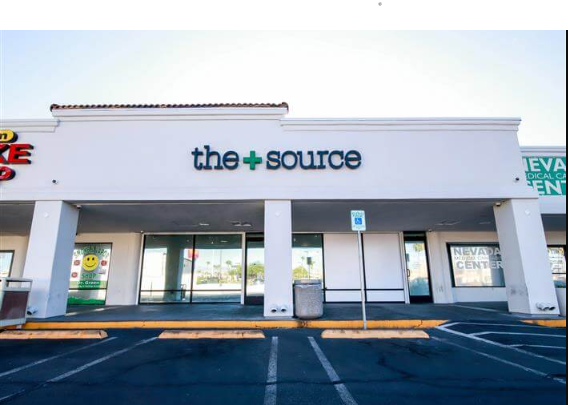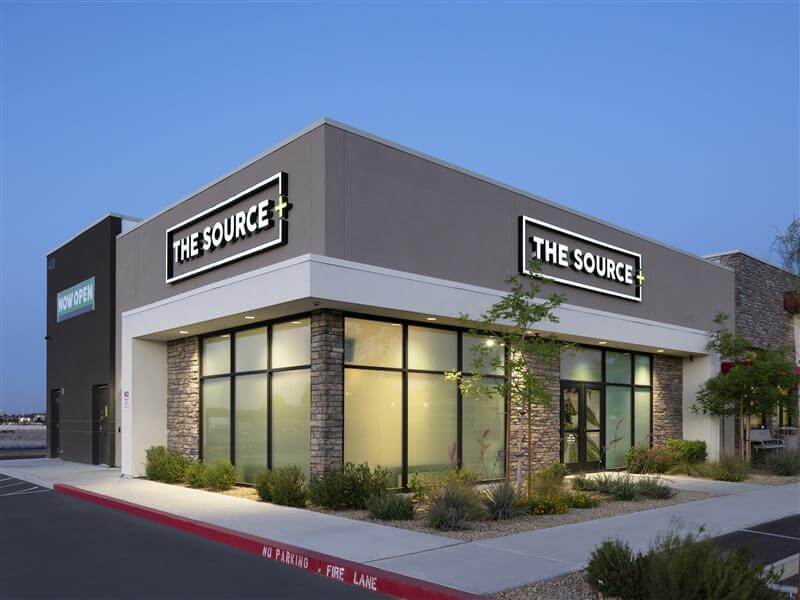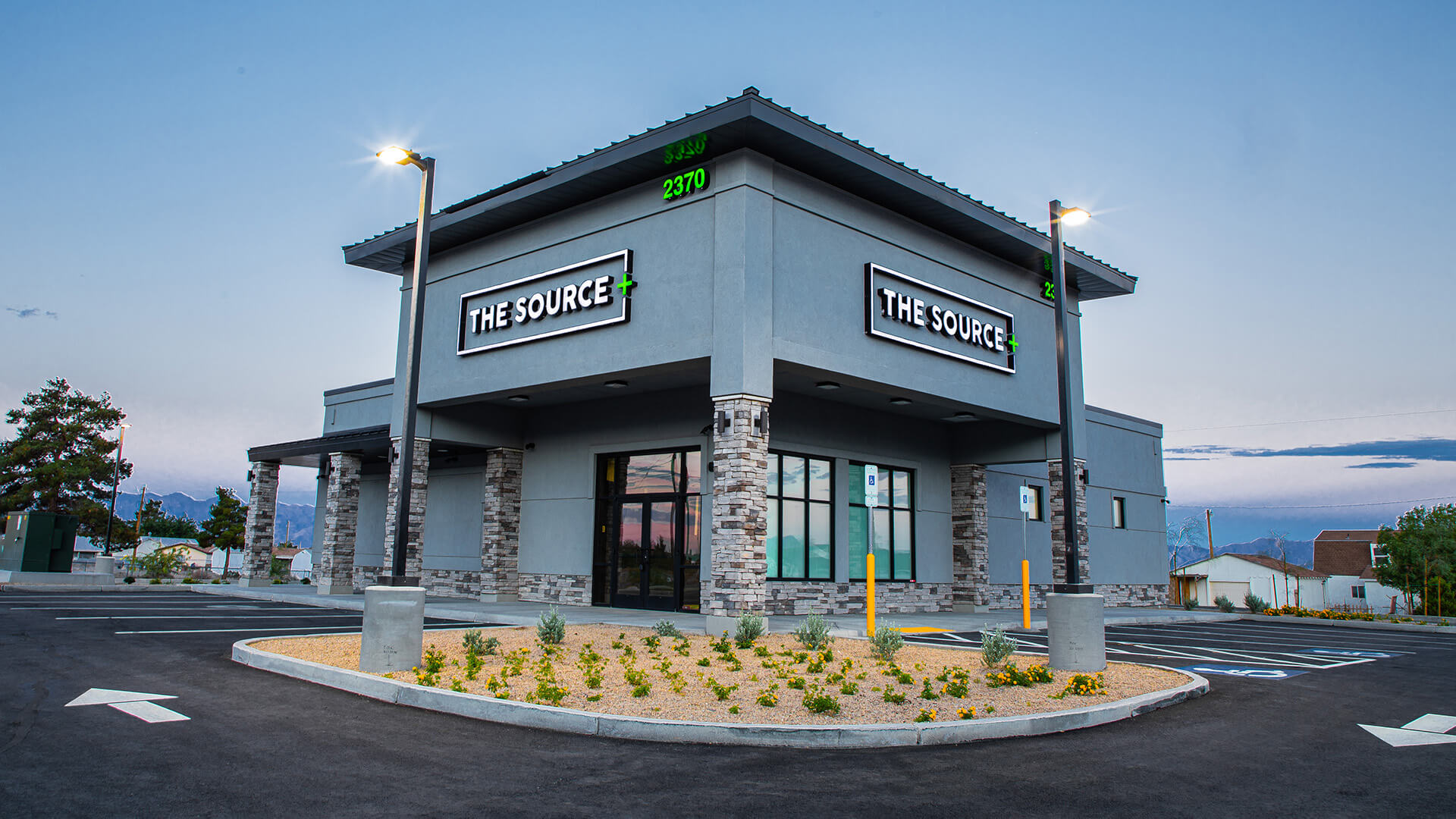The Cannabis Journey
My name is Tony Robertson and I work in cannabis. In the interest of establishing context: I started with The Source+ the same week Nevada began allowing recreational sales (July of 2017). This makes me a scarred veteran in some respects, but we have been open and operating since the medical-only days, so I am not an industry original.
I showed up late to the party—I was a late bloomer cannabis-wise. I experimented two or three times before things became legal in 2017, and honestly didn’t enjoy it. I didn’t really begin consuming until starting with The Source+ later that year and subsequently had my mind blown.

Cannabis had always occupied the same space as liquor in my head: a way to unwind that wasn’t for everyone. I applied for a job as a patient advisor on a recommendation from a friend and discovered a beautiful world I had never considered.
Not wanting to sound ignorant, I dove headfirst into cannabis studies anywhere I could find them, from medical journals to blog posts. I fell down a wellness rabbit hole: taking a class on botany and another on plant-based medicine. I asked questions of coworkers who were understanding of my newness and eager to share their experiences. They spoke about cannabis with more passion and knowledge than professionals in most other industries in which I’ve worked.
I suffered from misconceptions about cannabis my entire life. Coming from the world of education, it was deeply humbling to see how wrong I’d always been; seeing very little beyond the stigma associated with cannabis. This month, with our five-year anniversary in full swing, I just wanted to share a few reflections on my time in the industry.
Cannabis Has Multiple Uses
I want to start off by being transparent here: I do not use cannabis for expressly medical purposes. I partake because I enjoy. Using cannabis gives me access to a headspace I like. That being said, it does so in a very “medical” way. I don’t sleep well. I’m a worrier and a pessimist by nature. Who isn’t? At least occasionally.
Cannabis helps me sleep; if you’re reading this, it probably helps you do the same. There’s a lot of neurochemistry behind how cannabis works and there are multiple contributing factors (some from the plant and some from your body) which cause one strain or consumption method to be more or less effective as a sleep aid. But in some aspects, it’s a lot like exercise. Cannabis is a neural exciter; consuming it increases brain activity. When your feeling of euphoria starts to wear off, your brain is tired. I find it much easier to drift off in that mental state.
Note, lower THC strains, the ones that may not make a person feel highly medicated, are often better for sleep. For this specific use, you’re not necessarily looking for a happy “buzzed” feeling. You’re looking for a wind-down. High THC strains are great, but sometimes a sandwich is more appropriate than Thanksgiving Dinner.

Speaking of, let’s talk about appetite stimulation. I’m a big guy. I don’t need any help in that department, but some people use cannabis to manage their appetites. Heavy cannabis users (no pun intended) will tell you that it can be hard to work up the desire to eat without the appetite stimulation effect we lovingly refer to as the munchies.
We’ve all heard anecdotes about people using cannabis to help recover from chemotherapy, which is known for killing the appetite, thereby robbing people in recovery of the nutrients their bodies need to fight the disease. However, one of the most touching moments I’ve ever had on the job was a patient who struggled with bulimia and serious body image issues her entire life. She used that appetite stimulation to train her body. She only ate after consuming cannabis, keeping only healthy snackables around and eliminating the binge-purge cycle in which she felt trapped.

Another patient who is dear to my heart had suffered from a traumatic brain injury in the past. She credits cannabis with helping her regain some memory and speech function. Though the number of clinical studies to support this is insanely low (two, the last time I did research), the neuro-exciter effect of cannabis shows a lot of promise here. Because of the increased neural activity, the brain can “think around” problem areas and access old information from new directions.
Medicinal Benefits of Marijuana Aren’t New
When I first began, I had a knack for retaining terpenes and their effects. For those of you unfamiliar with terpenes, they are the essential oils of plants. They have a lot to do with the smells and tastes we experience. In the world of cannabis, naturally occurring trace amounts of these terpenes (found more abundantly in other plants) dictate how a strain behaves. Myrcene, also found in mangoes, can make the body feel lazy—we call this a warm blanket feeling—and also increases the psychoactive potential of the THC. Fun stuff.
The thing is, the medicinal qualities of these terpenes has been observed in other plants for most of human history. Here’s a secret, just between you and me, I found it so easy to memorize terpenes and their properties, because I had already done something similar for the Medieval Studies and Medieval Literature courses I took at UNLV. (Yes, my degree is useless)

Linalool is the essential oil found in lavender. It’s also an anxiety killer. Lavender has been used as folk medicine in calming teas and tinctures for hundreds of years.
Ancient European grandmothers weren’t the only ones on the Terpene Train before the cannabis industry climbed aboard. Limonene is hugely popular. It’s a happy terpene. It makes you feel engaged and refreshed. We refer to it as an antidepressant and it is responsible for the bright smell and bright feelings associated with sativas. It’s found in most citrus fruits, and also Lemon Pledge.
Don’t freak out! Yes, lemon oil is a great antibacterial, and you probably shouldn’t put it in a vape pen, but the reason manufacturers still add it to floor cleaners and furniture polish is the way our brains react when we smell it. Limonene is responsible for the way lemons smell: clean, fresh. Our brains appreciate those things on an evolutionary level.
Picture this as a commercial: a big, burly lumberjack steps into an alpine forest, puts his hands on his hips, and takes a deep breath. What’s he selling? Doesn’t matter. You’ve already got the message: a breath of fresh air. Pinene is the essential oil found in pine needles. It’s a bronchial dilator. In encourages the alveoli in your lungs to open up and take on increased oxygen.
Is there a reason strains high in pinene tend to hit a little harder or more immediately? Yes. While those alveoli are open, there’s more surface area to diffuse THC. Additionally, people looking for a “focused” high for study, or for post-workout recovery are going to reap the benefits of the increased oxygen.
Occasionally, a customer is floored by the quality of our recommendations when they’re looking for something to help them feel a certain way or deal with a specific issue. We’re not keepers of secret knowledge. We’re just applying prevalent Holistic Medicine principles that humans have known about longer than we’ve had written language.
The Cannabis Industry – It’s Okay to Be Different
I can hear your eyes rolling: What kind of trite afterschool-special propaganda is this? Believe me, I sympathize. But I feel like that might be the very heart of the cannabis industry. I never told any of my colleagues that I learned the basics of my job by applying principles I learned translating what amounted to recipes for potions written by people who thought leeches were medicine, but I could have. Cannabis promotes acceptance.
If there’s one common thread among cannabis users, from the recreational weekend warrior to the daily medical user, the “canna-curious” soccer mom to the “cannaseur” who has been growing herb since the 60s, it’s that we all appreciate feeling different for a while.

We’re all looking for a head change, and why wouldn’t we be? The insides of our heads can be great, full of happiness and imagination. Our heads can be scary places as well; talk to someone dealing with PTSD. More frequently and less tragically, the insides of our heads can be boring. We’re all binging the same shows, liking the same posts, subscribing to the same streamers. Cannabis grants a change in perception, and all of a sudden that Office clip where Kevin spills the Chili has a little bit more depth. You might realize we’re all Kevin from time to time.
Even better, some of us are just curious. What does the world look like when I’m in an altered state of reality? What fresh perspective will I have on hip hop, the Bible, or outer space when I contemplate them after consuming? For many of us, cannabis has helped us turn our eyes inward and helped us see that there’s more to all this than just fitting in with everyone else.
The Cannabis Stigma is Undeserved!
The uniqueness of our internal landscapes is what makes us beautiful, but we can’t know that if we never spend any time there.
People call cannabis a Gateway Drug, meaning people may be more likely to experiment with other drugs after experimenting with cannabis. Generally, that’s presented as a bad thing, so I don’t endorse the ethic, but there is a certain logic to it.
I refer to CBD as the gateway drug all the time, because patients come to us looking for a CBD product that will help them sleep or experience less pain without the “high” feeling associated with cannabis use. Frequently, they will return in high spirits, happy with their experience, and newly curious about THC (the psychoactive component to cannabis about which they were skeptical).
Applying the term Gateway Drug in that way lends a bit of a different perspective. They were afraid of the stigma associated with cannabis, tried an aspect of it they were told was safe, and came back bolder and wanting to try more.
What this tells me is that a wall came down in their minds. This imaginary customer had been misinformed about the dangers associated with cannabis. They took stoner movies at face value, rather than appreciating the farce. On some level, I believe they felt lied-to; something along the lines of: If this low-stakes product can help me deal with chronic pain or anxiety, and I am more comfortable with the side effects than the ones listed on a prescription bottle, what else have I been missing?
It’s a roundabout way of saying so, but that’s the idea I want to leave you with after almost 4 years working in this industry, two and a half years of teaching our Higher Education classes, and a few golden moments with our patients and my coworkers: I want you to be curious. I want you to ask questions about strains, about terpenes, about cannabis news. I want you to ask yourself what uses there are for cannabis that you haven’t experienced.
Most important, I want you asking the only question that really matters: What else don’t I know?

That’s it for Higher Education this year; it has been a weird one for sure, but we’ll keep moving forward and we’ll learn more together in 2021. If you have questions, suggestions, or ideas for a class (or blog post), send them over: highereducation@thesourcenv.com
Thanks. Couldn’t have done it without you.
-Tony Robertson











